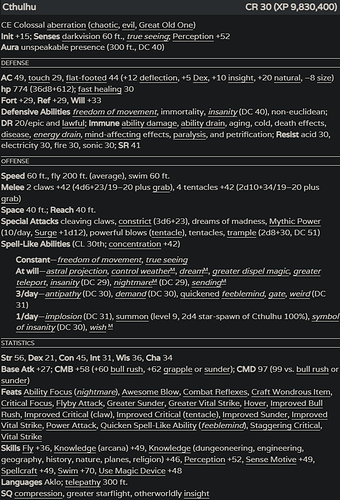I know there are modern readers who are uncomfortable with what they perceive as racism in HP Lovecraft’s writings. I can understand the case they might make about dehumanizing “the other”, although I disagree it’s more pronounced in Lovecraft than other horror writers of his time. I furthermore accept that Lovecraft used racist language in his correspondance, but I’ve only read his fiction and I have little interest in his letters or personal life.
But as I read his stories these days, I try to be sensitive to what might bother other people, even if it doesn’t bother me personally. I’m happy – eager, even! – to revisit familiar texts with new perspectives. As such, I want to share something that caught my eye re-reading At the Mountains of Madness. I hadn’t recalled this bit, and I probably wouldn’t have noticed it if weren’t for the complaint that Lovecraft’s dehumanizes “the other”, and by extension makes it easier to dehumanize people who look or behave differently. (If I’ve mis-stated the case about Lovecraft and racism, I would welcome any corrections!)
At the Mountains of Madness is about an Antarctic expedition that discovers frozen aliens. The aliens thaw out, attack the expedition, and then flee toward their secret underground city. The third-act twist is that there’s something even worse in the underground city. Spoiler: it’s a shoggoth. At one point, the human protagonists discover the thawed and escaped aliens, called Old Ones, have all been slaughtered by the shoggoth. He ponders that they didn’t deserve it, that they were explorers just like himself and his colleagues. He puts himself in their place, imagining how they must have been shocked to find themselves suddenly awake amid equally shocked men and dogs:
That awful awakening in the cold of an unknown epoch – perhaps an attack by the furry, frantically barking quadrupeds, and a dazed defense against them and the equally frantic white simians with the queer wrappings and paraphernalia…poor Lake, poor Gedney…and poor Old Ones! Scientists to the last – what had they done that we would not have done in their place? God, what intelligence and persistence! Radiates, vegetables, monstrosities, star-spawn – whatever they had been, they were men!
Bolding mine, of course. Lovecraft continues in this vein, as he’s wont to do, for a while. But it surprised me that Lovecraft’s main character is so willing to extend the rubric of humanity to murderous, starfish-headed, space-vegetable aliens. This is literally the opposite of dehumanizing the other. He calls the Old Ones “men of another age”.
I don’t mean to read too much into it, as I don’t think Lovecraft was a particularly thoughtful or careful writer. He doesn’t really do characters or motivations, or even anything about the human experience other than being afraid of the unknown. He’s about as pure as horror can get in that regard. When you read Lovecraft, you’re placing an order for extra cosmos, hold the humanity. But whatever you can infer about Lovecraft’s opinion on people and races and the human condition, whatever messages and subtext you cull from his goofy stories, just remember that one of his typically under-written protagonists at least had the empathy to feel bad for frozen aliens in the Antarctic!






